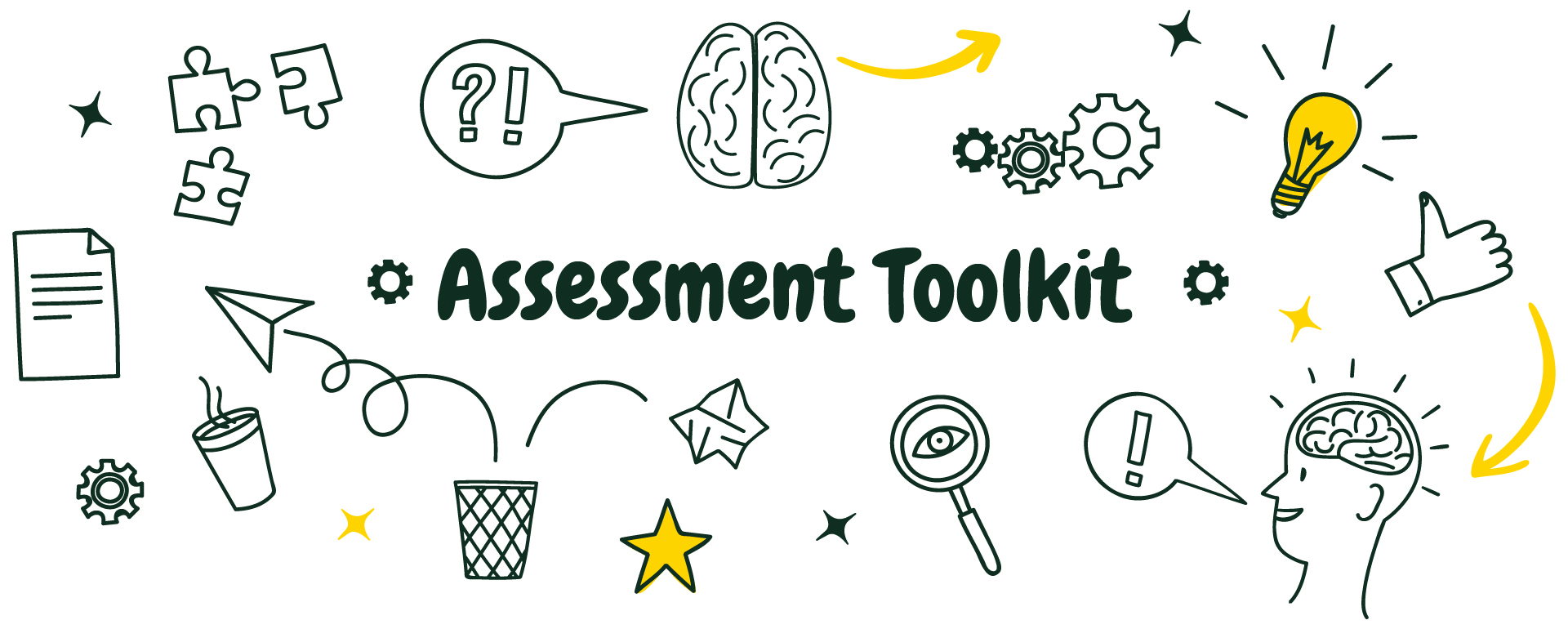
Assessing the effectiveness of a student partnership is crucial to its successful implementation. This toolkit comprises three key stages: pre-project, mid-project, and post-project stages. It is designed for teachers and academic developers to evaluate their partnership with students and identify the areas for improvement.
Project Commencement Assessment
This stage is to gather baseline information about the partnership, enabling a better understanding of each partner and identifying the readiness of the partnership project. Sample criteria and questions include:
| Criterion | Questions |
| Understanding and expectations | – How knowledgeable are staff and students about student partnership? – What are the expectations of students and staff regarding the partnership and the project? |
| Competence | – What are the strengths and weaknesses of each staff and student? – Are there any additional training or support needs? |
| Goals and objectives | – Are the project’s goals and objectives clear and specific? – Are they consistent with the needs and expectations of staff and students? |
| Roles and responsibilities | – Are the roles and responsibilities of each partner clearly defined? – Are there any overlapping or ambiguous roles or tasks that need clarification? |
| Communication and collaboration | – Have students and staff reached a consensus on an efficient way to communicate and collaborate? |
| Resources and support | – Are there any resources, such as funding or equipment, that can facilitate project implementation? |
| Ethical issues | – Does the project require any ethical approval from relevant authorities? |
Mid-Project Assessment
This stage is to track the project progress and identify any gaps or challenges that occurred, leading to necessary adjustments. Sample criteria and questions include:
| Criterion | Questions |
| Student engagement and involvement | – Are students actively participating in the partnership? – Are there any barriers affecting students’ engagement that need to be addressed? |
| Student empowerment | – Are students able to take ownership and responsibility for their role within the partnership? – Do students have the opportunity to make decisions or suggest changes to the project? – How do students perceive their worth and the role that they perform in the partnership? (Dollinger et al., 2022) |
| Communication and collaboration | – Is there clear communication between staff and students? – Is the current communication and collaboration method effective? – Are there any gaps or problems in communication or collaboration that need to be addressed? |
| Timeline and milestones | – Has the project progress adhered to the intended timeline and achieved specific milestones? – Have there been any changes or delays to the original plan? If so, what are the reasons? – Have any challenges or risks been encountered? – What improvement or adjustment can be made? (Dollinger et al., 2022) |
Post-Project Assessment
This stage is to evaluate the overall outcomes and deliverables, as well as the effectiveness of student partnership. Sample criteria and questions are as follows:
| Criterion | Questions |
| Outcomes and deliverables | – What are the key deliverables and outcomes of this project? – Do the key deliverables meet the desired standards and contribute to project objectives? – Does the project have a positive influence on its target area? |
| Experience | – Did all partners enjoy participating in this partnership? – Did the partnership structure facilitate the project implementation? – Did collaboration and communication within the partnership contribute to a positive project outcome? – Does the partnership benefit both students and staff? – Does the partnership align with the perceptions of students and staff? |
| Personal development | – Has the partnership affected students’ self-confidence in undertaking similar projects and challenges? – Has the partnership influenced partners’ personal skill development? |
| Professional development | – Have students improved their transferable and employability skills? – Have students expanded their knowledge in the specific area through this partnership? – Have staff and students enhanced or developed professional skills through this partnership? Do they meet their initial expectations? – Do all members have a better understanding of student partnership? |
By systematically evaluating different stages of student partnership, staff and academic developers can enhance the effectiveness of the collaboration and make improvements.
Reference
Dollinger, M., Ambriano, D., Conway, K., Harris-McNeill, I., Hennessey, T., Miller, K., Patterson. C., Ratcliffe. W., & Vickery, S. (2022). Students as partners toolkit. Council of Australian University Librarians. https://caul.libguides.com/students-as-partners-toolkit/reflecting-and-evaluating
Healey, M., Flint, A., & Harrington, K. (2014). Engagement through partnership: Students as partners in learning and teaching in higher education. The Higher Education Academy.
Jääskelä, P., Poikkeus, A. -M., Vasalampi, K., Valleala, U. M., & Rasku-Puttonen, H. (2017). Assessing agency of university students: validation of the AUS Scale. Studies in Higher Education, 42(11), 2061–2079. https://doi.org/10.1080/03075079.2015.1130693
Martens, S. E., Spruijt, A., Wolfhagen, I. H. A. P., Whittingham, J. R. D., & Dolmans, D. H. J. M. (2019). A students’ take on student–staff partnerships: experiences and preferences. Assessment & Evaluation in Higher Education, 44(6), 910 – 919. https://doi.org/10.1080/02602938.2018.1546374
Mello, L. V., Tregilgas, L., Cowley, G., Gupta, A., Makki, F., Jhutty, A., & Shanmugasundram, A. (2017). ‘Students-as-partners’ scheme enhances postgraduate students’ employability skills while addressing gaps in bioinformatics education. Higher education pedagogies, 2(1), 43-57.
Sheppard, K., & Khosravi, H. (2018). Students as partners in action: Evaluating a university-wide initiative. International Journal for Students as Partners, 2(2), 85–95. https://doi.org/10.15173/ijsap.v2i2.3576
